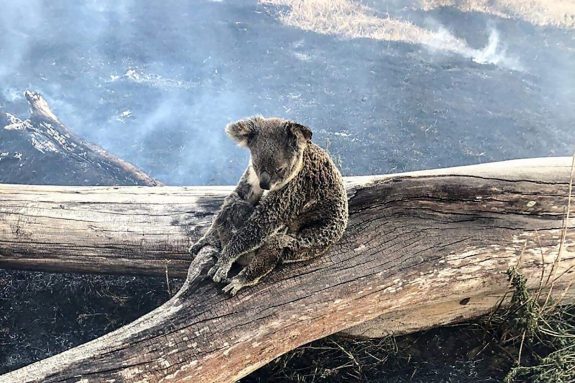Could artificial intelligence save Australia from another black summer?

University of South Australia Media Release
Flashback to the summer of 2019/20 when horrendous bushfires burnt 18.6 million hectares in Australia, killing 34 people, one billion animals, and damaging thousands of properties.
Two years down the track, could we potentially be facing another disastrous fire season in the months ahead?
Perhaps. But what if the satellites orbiting above Australia could detect very small fires before they became problematic? This is the challenge facing UniSA STEM PhD candidate Liang Zhao.
The second-year PhD student is collecting smoke imagery from multiple satellites and then designing and training artificial intelligence (AI) models to recognise small outbreaks with the aim of preventing a repeat of the 2020 summer.
Zhao’s algorithm will use satellites to improve fire detection, even from 30,000 kilometres away.
“The problem with satellites is that those with high spatial resolution, focusing on small areas, tend to have low temporal resolution, taking much longer to capture images for the same location,” he says.
Conversely, satellites with low spatial resolution, such as the Japanese weather satellite Himawari-8 situated over Australia, capture multiple images in quick succession but with less detail.
Zhao’s plan is to use his model on multiple satellites so that both detail and time are considered when capturing images. His algorithm is trained to detect smoke, as opposed to cloud, and overcome the problem of small fires obscured by forest canopies.
He has already successfully tested his algorithm on bushfire imagery captured from Landsat 8, a high spatial resolution satellite.
Zhao’s software complements the work that is being undertaken in Australia to build satellites and drones specifically to detect fires outbreaks by monitoring Australia from a low orbit.
Queensland based company Fireball plans to launch a constellation of 24 purpose-built satellites in 2022, with the aim of establishing a national system of automated bushfire surveillance within five years.
An ABC story this year reported that new fires can spread 1500 square metres every 10 minutes, and if located in a remote area, could burn for hours before being detected.
Failing to detect bushfires could cost Australia $2.4 billion a year by 2049, fuelled by global warming, according to Australian National University modelling, making the investment more urgent.
The same modelling predicted that early bushfire detection could save the Australian economy $8.2 billion over the next 30 years.
“This is why many countries, including Australia, are launching more satellites specialised in fire detection,” Zhao says. “And with these satellites, the core is the algorithm, which is what my project is focused on.”
(Zhao was one of seven UniSA PhD candidates to present their research in this year’s Three Minute Thesis competition earlier this year.)
Like what we do at The AIMN?
You’ll like it even more knowing that your donation will help us to keep up the good fight.
Chuck in a few bucks and see just how far it goes!










8 comments
Login here Register here-
leefe
-
New England Cocky
-
RosemaryJ36
-
Michael Taylor
-
pierre wilkinson
-
GL
-
Phil Pryor
-
GL
Return to home pageAI would be a great improvement on the current ZI (Zero Intelligence) misgovernment we’re saddled with.
Progress …..the 1969 ANZAAS Conference at UniSA and the plant pathology post graduate student who started aerial data collecting with a 2m wing span radio controlled model plane carrying a reflex camera.
Time is of the essence.
And we’re running out of it, Rosemary.
not much good knowing where the fires are when the NSW and federal governments have slashed funding to those that fight them
As long as we have parties like the LNP in power all there will ever be is words of meaningless, but, they sound good to the unwashed masses that are beloved of the right wing, value. Shrug of the shoulders and, “Eh, whatever. We promise to do something after we win the next election. Under Labor…” On and on it goes.
Artificial, superficial, synthetic, illusory, Any intelligence might improve this stained, soiled, shitskulled sham of a government under the Swollen Liar and his foreign corporate bumboying and joygirl obedient followers…
I think an artificial intelligence upon waking up and the first thing it sees and hears is the gormless lying s.f.b. in charge of the country would blow itself up.